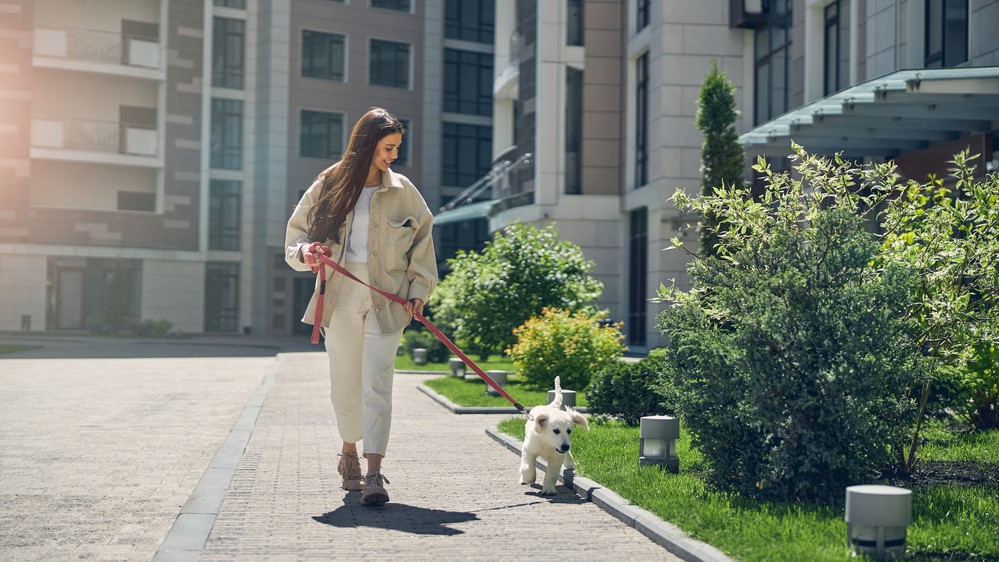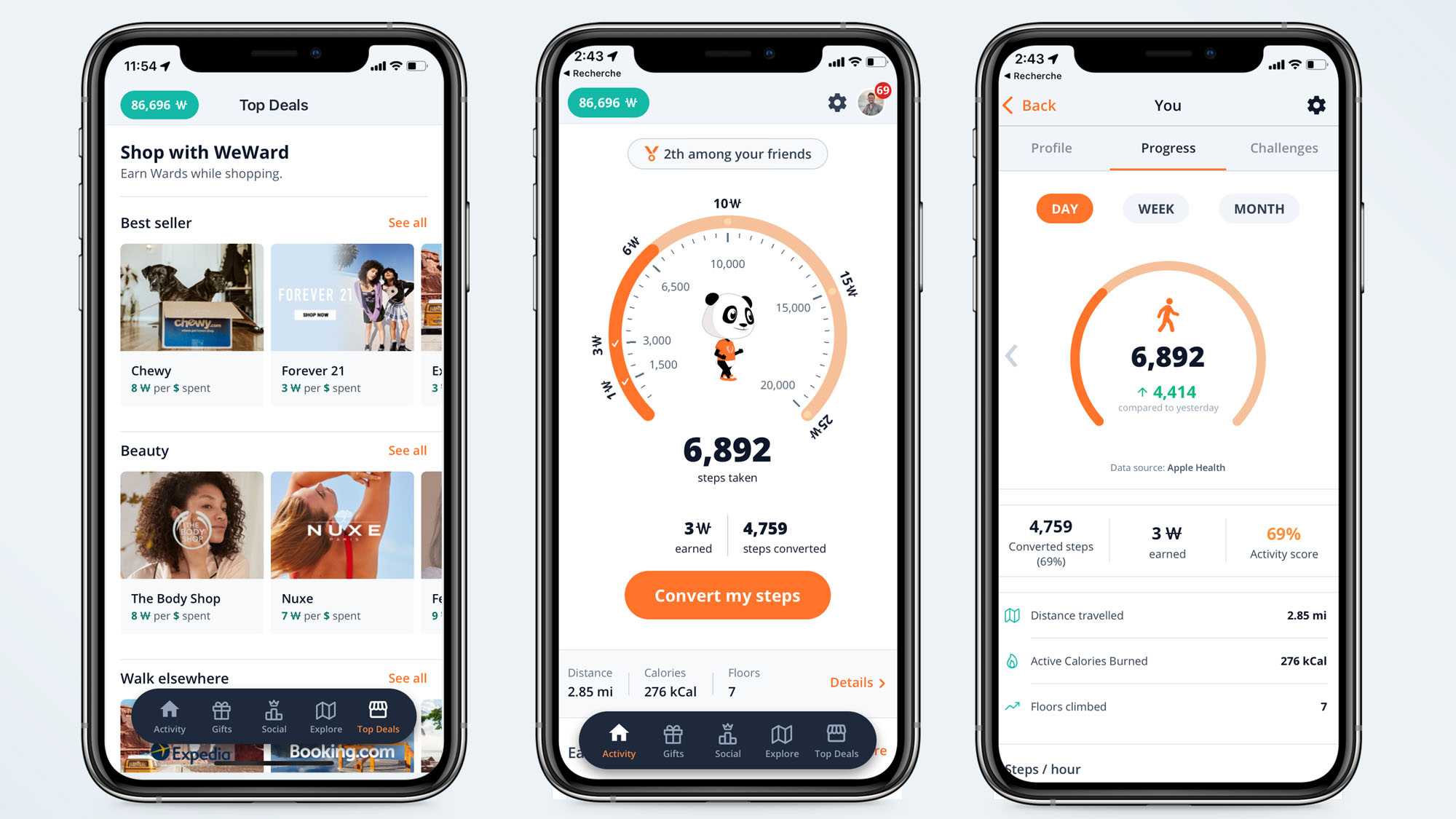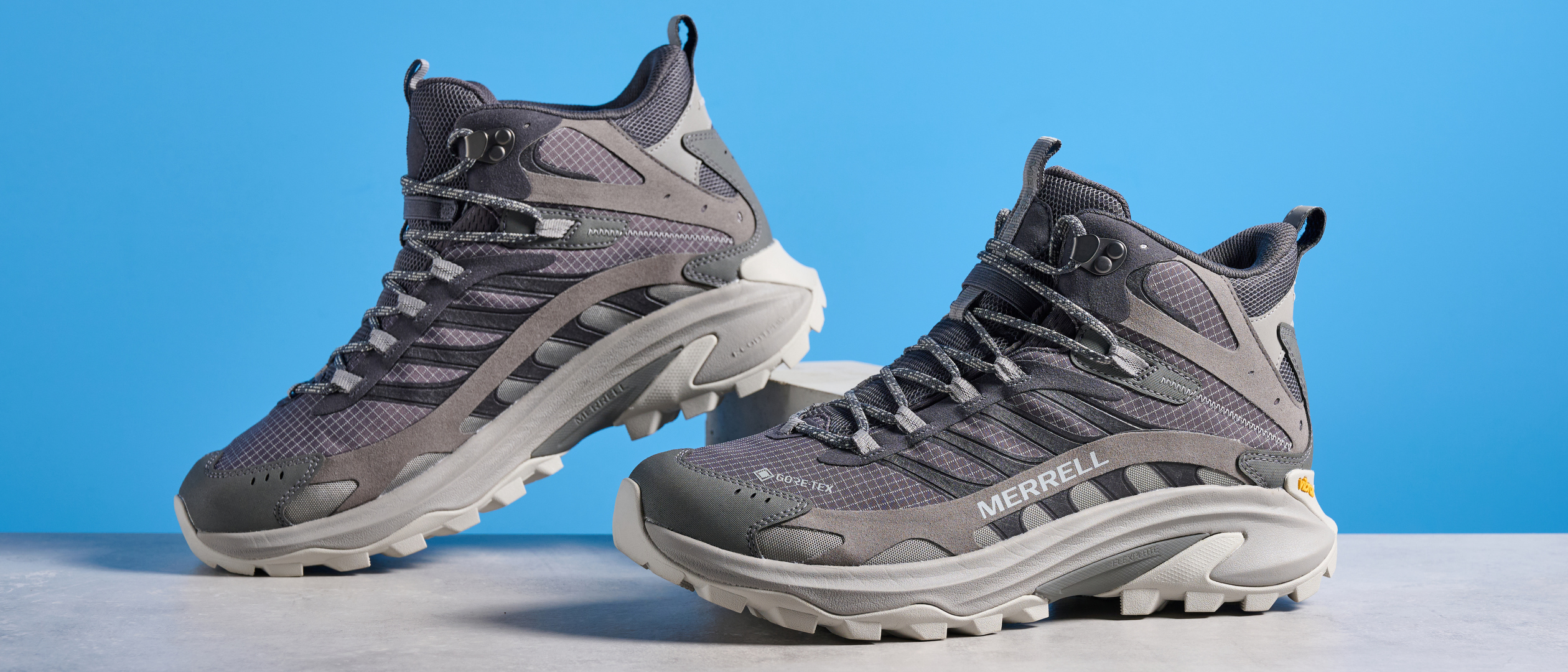I used this app for two weeks and made money just by walking my dog
Here’s how I did it

As a fitness editor and a dog owner, I spend a lot of time walking and running outside, whatever the weather. Normally I’ll have completed a couple of thousand steps before sitting down at my desk at 9 AM, and more often than not, my day starts with an hour-long hike with an out milk latte in my hand, and my cocker spaniel in tow. So when I wrote an article about how to get paid to walk, I decided to download an app to my phone, just to see how much I could earn on the move.
The app I decided on was WeWard — a walking app with more than 10 million users in Europe that recently got released in the US. The app’s premise is simple: It’s free to download, and encourages people to walk more by allowing them to earn ‘wards’ for the steps they take. These wards can be converted into money, and the goal of the app is to improve health and cut down on carbon emissions.
But how does the app work, and how do you convert your steps into money? I clicked download, grabbed my best running shoes, and left it tracking in the background to find out more. Read on to find out what happened.
Looking for more workout inspiration? This dumbbell workout sculpts your abs in just 15-minutes, this Pilates exercise is one of the best for firing up your core, and this is what happens when you do 50 Russian twists a day for a week.
I used this app for two weeks and made money walking the dog
The WeWard app is free to download on iOS and Android. Once downloaded, you’ll need to give the app permission to track your steps, as this is how you convert them into money. The app uses physical activity data to validate the steps you take, and geolocation data for the “I’m in” section of the app (more on this below), but promises not to sell your data with third parties.
Once downloaded and connected, your steps will appear on the app’s pedometer. You can earn up to 25 wards per day by walking, but you’ll need to log into the app to convert your steps. It won’t do this automatically — I walked 9 miles around Dublin on day three of testing the app, but forgot to click convert, so didn’t get any points for my miles. I’ve since set up a daily reminder that flashes up on my phone at 9 PM. You can earn extra wards for taking part in challenges on the app, such as converting an exact number of steps per day or converting your steps between a certain time window.
You can also earn extra wards by visiting places on the map and checking in, buying from one of the partners on the app, watching advertising videos, or completing surveys. I didn’t do any of these things while using the app; instead, I just converted my steps each day. 1,500 steps earn you 1 ward, 3,000 steps take you to the second level of the pedometer and earn you 2 additional wards. The max number of steps you can convert each day is 20,000, and the max number of wards you can earn each day is 25 wards.
Get instant access to breaking news, the hottest reviews, great deals and helpful tips.

In the UK, 1 ward is worth £0.005, in the U.S., that's $0.005, so 100 wards are £0.50/$0.50. You’re not going to get rich by walking using this app. After two weeks of strolling, and 13 days of converting my steps (let’s not talk about that forgotten day), I’ve made a total of £2.75 using the app, so I’m by no means earning enough to quit the day job just yet. That said, I haven’t had to do anything other than my normal steps to make that money. Once you reach 3000 wards, you can request a bank transfer worth £15/$15 into your account. You can also choose to donate this money to one of the app’s philanthropic projects.
My verdict after two weeks of walking with the app? It soon becomes addictive. I found myself taking extra steps, or going for a quick walk around the block to reach the final level of my pedometer on days when I’d spent too much time sitting down. And it seems it’s not just my addictive personality that’s to blame — the app launched in France in 2019 and has reported a 24% increase in the daily steps of those using the app.
“Our goal is to get people walking the world over,” says Yves Benchimol, CEO and Co-Founder of WeWard. “Our convenience-driven society has made us inactive, isolated, and unhappy. Walking every day nurtures our bodies and minds, and walking makes the world healthier, happier, and more interconnected than ever. We’re seeking to rebuild communities and fight climate change just by incentivizing people to walk a little bit more every day.”
I’m still a few weeks away from my first bank transfer, but I’ll continue strolling with the app running in the background for now. Who knows, perhaps one day someone will develop a similar pedometer app for dogs, and my unruly spaniel can start to earn his keep. Until then, we’ll keep earning wards together.
Whatever app you choose to download to help you get paid to walk, you’ll want to be comfortable as you stride the sidewalks. We’ve hand-picked the best running shoes and the best hiking boots that will keep you comfy as you stroll, as well as the best fitness trackers to help you keep an eye on your daily step count.
Next: Also check out — pull-up vs chin-up: Which is better for building strength?

Jane McGuire is Tom's Guide's Fitness editor, which means she looks after everything fitness related - from running gear to yoga mats. An avid runner, Jane has tested and reviewed fitness products for the past five years, so knows what to look for when finding a good running watch or a pair of shorts with pockets big enough for your smartphone. When she's not pounding the pavements, you'll find Jane striding round the Surrey Hills, taking far too many photos of her puppy.
